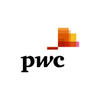PWC US Hospitality Directions: November 2022
Through Q3 2022, the US hotel industry has exceeded 2019 (pre-pandemic) RevPAR levels by 6.4 percent, based on data from STR. The recovery narrative continues to be centered around room rates. While occupancy through Q3 2022 was 3.8 points below the same period in 2019, ADR had increased 12.8 percent.
Following over two years of travel constraints, the US government significantly eased restrictions earlier this summer. As of June 12, 2022 air passengers were no longer required to get tested for COVID-19 (no more than 24 hours in advance), show a negative test result, or show documentation of recovery from the virus, before boarding a flight to the United States, regardless of vaccination status or citizenship. In addition, as of October 3, 2022, the CDC no longer maintains a country-by-country list of travel advisories related to COVID-19.
The Fed’s continued increases in their policy rate has caused uncertainty in the public markets, affecting lodging demand in Q4. We now expect annual occupancy for US hotels this year to increase slightly less than in our May 2022 outlook, increasing to 62.8 percent. Since July 2021, average daily room rates surpassed comparable 2019 levels in every month but one (January 2022 missed by $0.35). Since March 2022, RevPAR has exceeded comparable 2019 levels. We now expect average daily room rates to increase 19.3 percent for the year, with resultant RevPAR up 30.3 percent — approximately 108 percent of pre-pandemic levels, on a nominal dollar basis.
After going through the worst shock to our economy since the Great Depression, US hotels will see RevPAR finish at record highs this year, but economic headwinds are expected to continue to strengthen in 2023, threatening the pace of recovery. Warren Marr, US Hospitality & Leisure Managing Director
Trends and highlights
- Since our May 2022 outlook, the Fed’s monetary policy has resulted in significantly higher interest rates than previously expected over the period covered, resulting in an estimated steep slowing of construction starts for new hotels next year.
- In 2023, we expect demand growth from individual business travelers and groups to continue to offset a softening in leisure demand, with outbound international leisure travel outpacing inbound, given the relative strength of the dollar. Growth in both occupancy and ADR results in an expected year-over-year increase in RevPAR of 5.8 percent — approximately 115 percent of pre-pandemic levels.
- Significant risks to this outlook include the pace and magnitude of changes in the macro economic environment, the potential emergence of more potent variants of the virus over the winter months, and the ongoing conflict in Ukraine.
RevPAR percent change, US and chain scales
Download US Hospitality Directions November 2022.
About PwC Hospitality Directions US
PwC Hospitality Directions US is a near-term outlook for the US lodging sector, commonly used by industry decision-makers and stakeholders to better understand the impact of policy and other macro-environmental factors on the sector’s operating performance. Our outlook includes metrics for the overall sector as well as for the chain scales, and is used by our clients for
- strategic planning and capital allocation purposes
- demand and supply
- occupancy
- average daily rate
- revenue per available room
About PwC US
PwC US helps organizations and individuals create the value they're looking for. We're a member of the PwC network of firms in 157 countries with more than 195,000 people. We're committed to delivering quality in assurance, tax and advisory services. Tell us what matters to you and find out more by visiting us at www.pwc.com/US. PwC refers to the US member firm, and may sometimes refer to the PwC network. Each member firm is a separate legal entity. Please see www.pwc.com/structure for further details.




